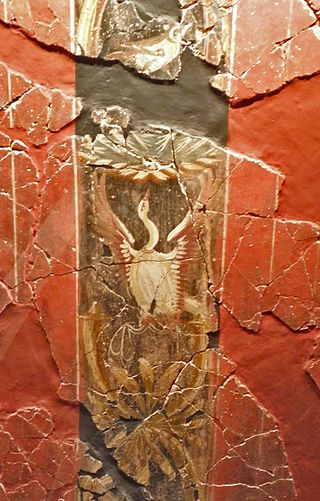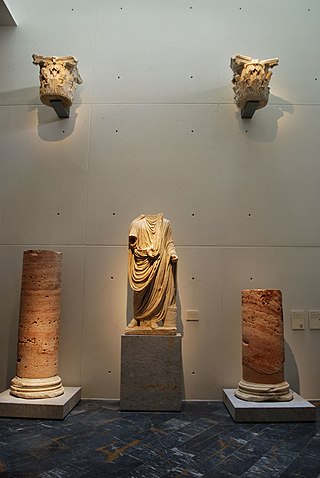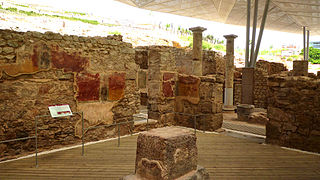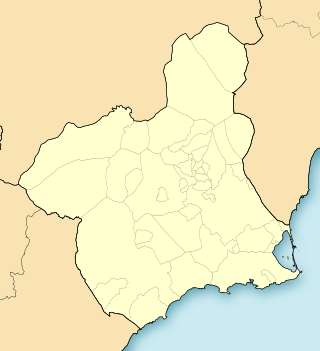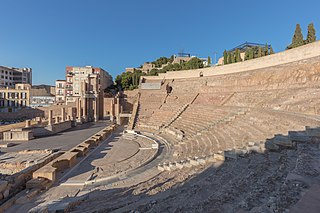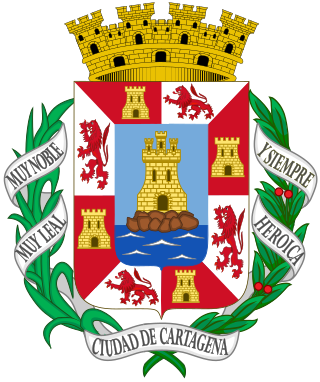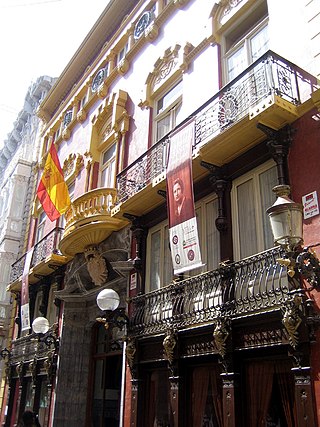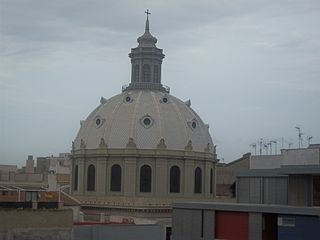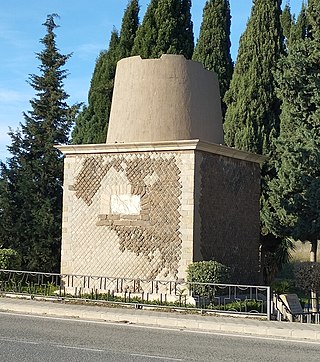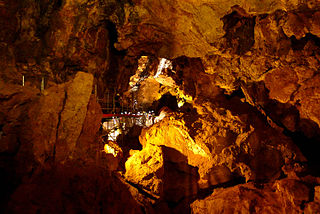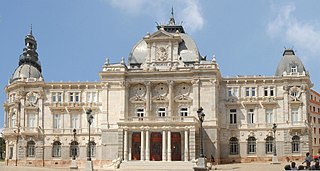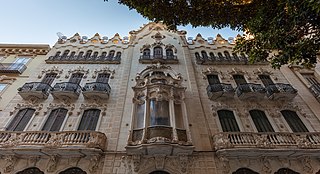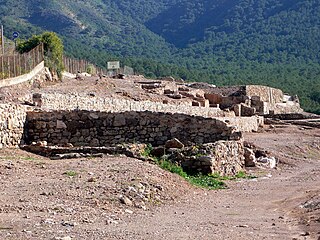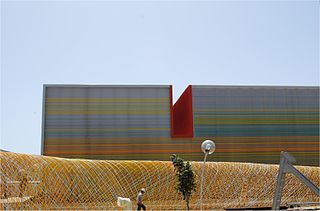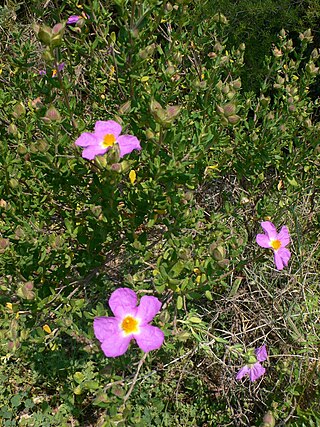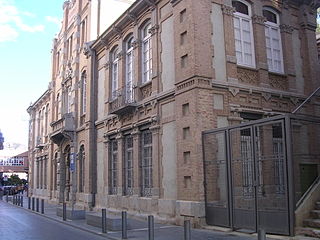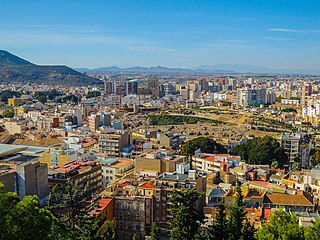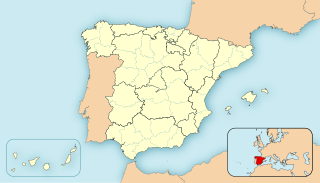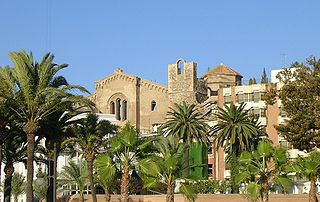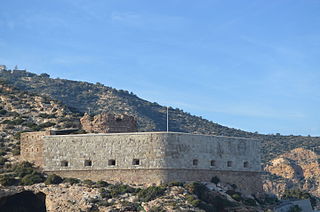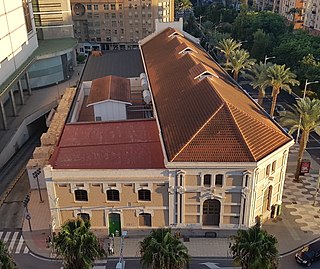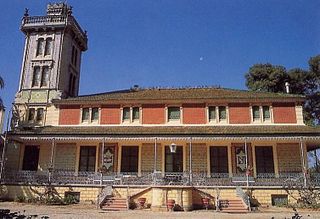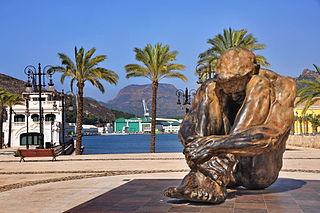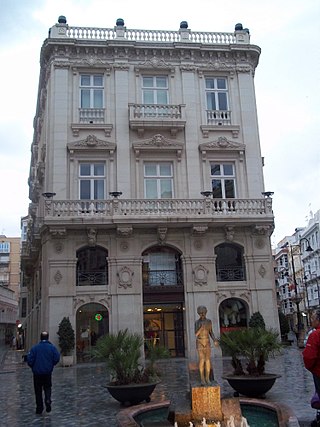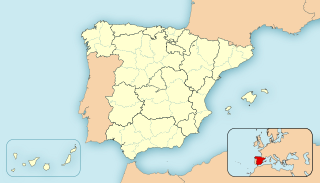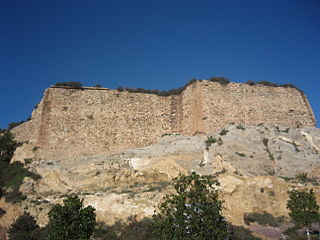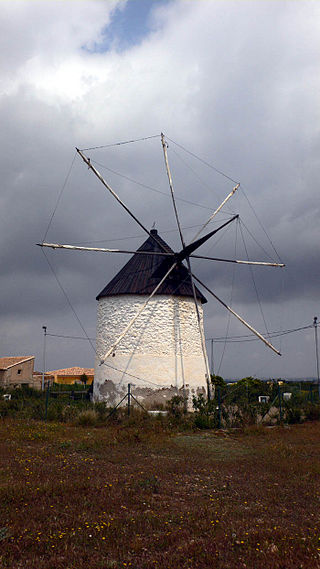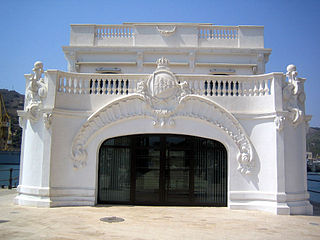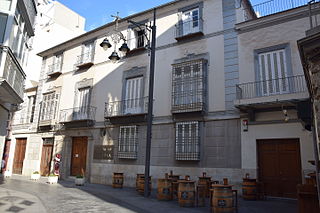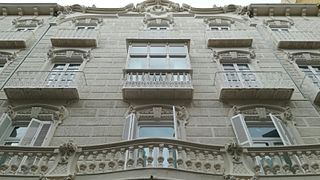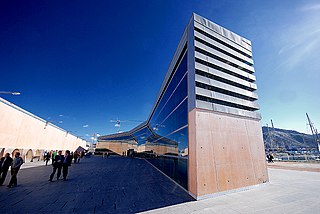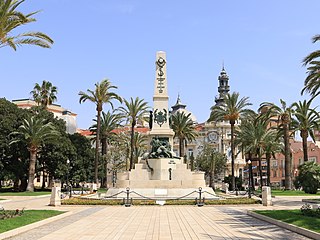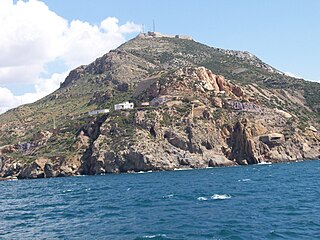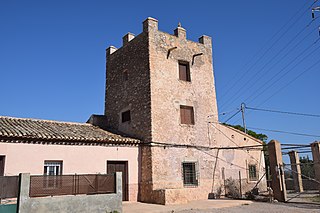36 Sights in Cartagena, Spain (with Map and Images)
Legend
Welcome to your journey through the most beautiful sights in Cartagena, Spain! Whether you want to discover the city's historical treasures or experience its modern highlights, you'll find everything your heart desires here. Be inspired by our selection and plan your unforgettable adventure in Cartagena. Dive into the diversity of this fascinating city and discover everything it has to offer.
Sightseeing Tours in CartagenaActivities in CartagenaLa Casa de la Fortuna is an archaeological site located in the city of Cartagena, Region of Murcia, Spain. It is a Roman domus from the first century BC. whose access is located in the Plaza de Risueño.
2. Museo del Teatro Romano
The Museum of the Roman Theatre of Cartagena is a work of the architect Rafael Moneo inaugurated on July 11, 2008 and is dedicated to the project of excavation, restoration and enhancement of the Roman theatre of Cartagena in Cartagena, Spain.
Wikipedia: Museo del Teatro Romano de Cartagena (ES), Website
3. Barrio del foro Romano
The archaeological site of the Roman Forum Quarter is made up of a set of Roman buildings discovered in Cartagena, built around one of the main roads of the city at that time: the Decumanus. From this decumanus you could access a large thermal complex and a large building with an atrium that has been identified as a headquarters of a collegium.
4. Faro de Cabo de Palos
The Cabo de Palos lighthouse is located in Cabo de Palos, which belongs to the Spanish municipality of Cartagena, in the Region of Murcia, on a rocky promontory, the last foothills of the coastal mountain range of Cartagena, which at this point sinks under the sea to re-emerge in the Hormigas Islands.
5. Teatro Romano de Cartagena
The Roman Theatre of Cartagena is a Roman theatre in the Roman colonia of Cartago Nova—present-day Cartagena, Spain. Built between the years 5 and 1 BCE, it had a capacity of some 6,000 spectators and was used for Roman theatrical performances during ancient Rome.
6. Torre de Santa Elena
The tower of Santa Elena, also known as the tower of La Azohia, is one of the towers designed in the sixteenth century within the coastal surveillance system, which stands in the fishing village of La Azohía, belonging to the municipality of Cartagena, located at one of the ends of the Gulf of Mazarrón. It is located within the protected natural area of the Sierra de la Muela, Cabo Tiñoso and Roldán.
7. Castillo de la Concepción
The castle of La Concepción or Asdrúbal is a medieval construction of the thirteenth or fourteenth century nestled on the hill of the same name that rises above Cartagena and its port. This castle is the one that is represented in the city's coat of arms.
8. Palacio de Casa Tilly
The Casino de Cartagena is a private institution established in the first half of the nineteenth century in the city of Cartagena (Murcia) Spain. Similar to the casinos and cultural circles that proliferated in those years.
9. Real Basílica de Nuestra Señora de la Caridad
The Royal Basilica of Our Lady of Charity is a neoclassical Catholic temple with a metal structure located in the Spanish city of Cartagena, in the Region of Murcia. Its interior, dominated by the dome, is reminiscent of many spaces of the same artistic trend, based in turn on Agrippa's Pantheon.
10. Torre Ciega
The Blind Tower is a Roman sepulchral monument from the first century BC. It is located on the outskirts of the historic center of Cartagena (Spain). The monument was part of a large necropolis that was located next to the main entrance road into the city. It is one of the three best-preserved Roman funerary towers in the Iberian Peninsula, with the Tower of the Scipios (Tarragona) and the Tower of Hercules (Villajoyosa).
11. Cueva Victoria
The Victoria Cave is a paleontological site located in the municipality of Cartagena (Spain). It is located on the southern slope of the head of San Ginés, inside a calcareous massif next to the Mar Menor and the Eastern foothills of Sierra Minera de Cartagena-La Unión. It was excavated by the Catalan paleontologist Josep Gibert I Clols.
12. Palacio Consistorial de Cartagena
The Cartagena City Hall, also known as the Cartagena City Hall, is one of the main modernist buildings in the city of Cartagena built between 1900 and 1907, the work of the Valladolid architect Tomás Rico Valarino.
13. Casa Maestre
La Casa Maestre is a modernist-style residential property in Cartagena. It was built in the 1900s under a project by the architects Marceliano Coquillat and Víctor Beltrí, and is located in the Plaza de San Francisco. Since 2021 it has been listed as an Asset of Cultural Interest (BIC).
14. Villa Romana del Paturro
The Roman villa of Paturro is an archaeological site of a large Roman villa located in the Sierra Minera de Cartagena-La Unión, in the vicinity of the town of Portmán in the Region of Murcia (Spain).
15. Auditorio y Palacio de Congresos El Batel
The El Batel auditorium and conference centre is a large cultural infrastructure located in the port of the Spanish city of Cartagena, next to the National Museum of Underwater Archaeology (ARQUA), whose works began in 2004 and opened its doors at the end of 2011.
16. Canteras Romanas
The Roman quarries of Cartagena are an archaeological site in which the remains of a sandstone exploitation from the time of Roman Hispania are shown. They are located in the county of Canteras, about 4 km west of the Spanish city of Cartagena.
17. Escuelas Graduadas
The Graduate Schools of Cartagena were the first educational centers in Spain to divide students by age and level, in addition to having properly sanitized classrooms for this purpose. The building where the classes were taught is located in the Spanish city of Cartagena, specifically on Gisbert Street in the old town, and has been declared an Asset of Cultural Interest since May 21, 2004.
18. Molinete
The Arx Asdrubalis is as it was known in ancient times one of the five hills where the urban enclosure of Qart Hadasht was built. It was on this hill where, according to the historian Polybius, the palace of the Carthaginian general and founder of the city Hasdrubal the Fair was located, which has not yet been located. It currently corresponds to the Molinete hill.
19. Batería de la Parajola
The La Parajola Battery, also known as C-3, is a Spanish coastal artillery support fortification located on the Galeras mountain, within the municipality of Cartagena, and more specifically in the Canteras Provincial Council. It is known mainly because during the Spanish Civil War one of its shots sank the ship Castillo de Olite, causing one of the greatest naval tragedies in the history of Spain. It was declared an Asset of Cultural Interest on August 7, 1997.
20. Batería de Las Cenizas
The Battery of Ashes, also known as C-9, is a coastal artillery support fortification located on Mount of Ashes, within the municipality of Cartagena and more specifically in the county of Rincón de San Ginés. Its access is on the road that connects Los Belones with Portmán.
21. Catedral de Santa María
The Cathedral of Cartagena in Spain, or the Cathedral of Santa María la Vieja, was a cathedral of the Diocese of Cartagena, located on the hill of La Concepción in the old town of Cartagena. It has been in ruins since 1939, when it was destroyed when Cartagena was shelled in the Spanish Civil War by Nationalist forces.
22. Fuerte de Navidad
The Christmas fort is located to the right of the port of Cartagena, to Poniente. He protected the entrance by crossing his fires with the batteries of Santa Ana and Trincabotijas, built in neoclassical style with casamatas for the installation of eight artillery pieces on the ground floor and another eight to barbeta on the upper floor. It is currently used by Cartagena Puerto de Culturas.
23. Subestación San Antón
The Fábrica de Fluido Eléctrico Hispania, popularly known as the Fábrica de la Luz, is an electricity factory built by the architect Francisco de Paula de Oliver Rolandi around 1900, in the Alameda de San Antón in the Spanish city of Cartagena.
24. Torre Llagostera
The Llagostera Tower, also known as Huerto de las Bolas in El Bohío is a building built inside a large garden in Cartagena, which has all the characteristics of a colonial, African or American mansion. It is a hybrid, exotic and classic architecture in a dusty Mediterranean.
25. El Zulo
The zulo is a bronze sculpture by Víctor Ochoa that has been on display since 2009 on the esplanade of the port of the Spanish city of Cartagena, in tribute to the victims of terrorism. The work, in which the art historian Ana María Preckler (2003) appreciated a "Michelangelesque workmanship", is 5 meters high and weighs 2.5 tons, and represents a naked man sitting in an attitude of reflection, with his head down and hugging his legs, almost in a fetal position.
26. Casa Pedreño
The Pedreño Palace, also known as Casa Pedreño, is an eclectic building built in the Spanish city of Cartagena – Region of Murcia – by the architect Carlos Mancha in 1875. It is located at the confluence of Sagasta, Carmen and Santa Florentina streets, at the Puerta de Murcia and with the statue of El Icue in front of it.
27. Batería de Roldán
The Roldán Battery, also known as C-51, is a Spanish anti-aircraft artillery support fortification located on Mount Roldán, within the municipality of Cartagena, and more specifically in the Canteras Provincial Council. It was declared an Asset of Cultural Interest on August 7, 1997.
28. Castillo de Despeñaperros
Despeñaperros Castle, also known as San José Castle, is a castle built in the 11th century in the historic center of Cartagena, Murcia Region in Spain. It was declared a cultural site on 7 August 1997. The walls are composed of masonry and generally flat. The interior of the fortification is divided in two perimeters, the lower with rooms for the occupants and a water reservoir, and an upper space occupied by the cannons, and which has lost gunships.
29. Molino Viejo de Zabala
The old mill of Zabala, sometimes known simply as the Zabala mill, is a flour windmill located near the Canteras-La Azohía road (RM-E22), within the municipality of Cartagena, and administratively integrated into the Perín Provincial Council.
30. Antiguo Club de Regatas
The old Regatta Club was the headquarters of the Real Club de Regatas de Cartagena. It was built by the architect Mario Spottorno in 1912, in the port of the Spanish city of Cartagena. Since 1988 it has been listed as an Asset of Cultural Interest.
31. Palacio Molina
The Palacio de Molina, also called the house-palace of Molina or mistakenly the palace of the Widow of Molina, is a palace built in the eighteenth century in the old town of the Spanish city of Cartagena. In 1986 a file was initiated to declare the building as an Asset of Cultural Interest, which however has not yet had a final resolution.
32. Casa Dorda
Casa Dorda is a modernist building built in 1908. It is located between Calle del Carmen and Jabonerías, in the historic center of the city of Cartagena (Murcia). It was built by the Catalan architect Víctor Beltrí.
33. Museo Nacional de Arqueología Subacuática
The National Museum of Subaquatic Archaeology is a underwater archaeology museum in Cartagena (Murcia), Spain. It owns a large collection of pieces recovered from shipwrecks that begins in the Phoenician period, and arrives until the 19th century. It is one of the National Museums of Spain and it is attached to the Ministry of Culture.
34. Monument to the Heroes of Cavite and Santiago de Cuba
The Monument to the Heroes of Cavite and Santiago de Cuba is an instance of public art and war memorial in Cartagena, Spain. It commemorates the role of the naval squadrons commanded by Patricio Montojo and Pascual Cervera during the 1898 Spanish–American War.
Wikipedia: Monument to the Heroes of Cavite and Santiago de Cuba (EN)
35. Castillo de San Julián
The Castillo de San Julián, also known as Saint Julian's Fort, is a fort in Cartagena, Spain. It was built between the 18th and 19th centuries, incorporating a tower which had been built by the British in 1706. The fort remains intact today, but it is in a rather dilapidated state.
36. Torre Rubia
The Rubia Tower is a defence tower located in the hamlet of Molinos Marfagones, in the municipality of Cartagena, Murcia. Built around the sixteenth or seventeenth century, to protect the repopulation processes of the rural environment of Cartagena. The building, with a quadrangular floor plan, has three floors and a crenellated crown and is, therefore, one of the best preserved examples of this type of fortification. It is listed as an Asset of Cultural Interest by the Second Additional Provision of Law 16/1985, of 25 June, on Spanish Historical Heritage.
Share
How likely are you to recommend us?
Disclaimer Please be aware of your surroundings and do not enter private property. We are not liable for any damages that occur during the tours.
